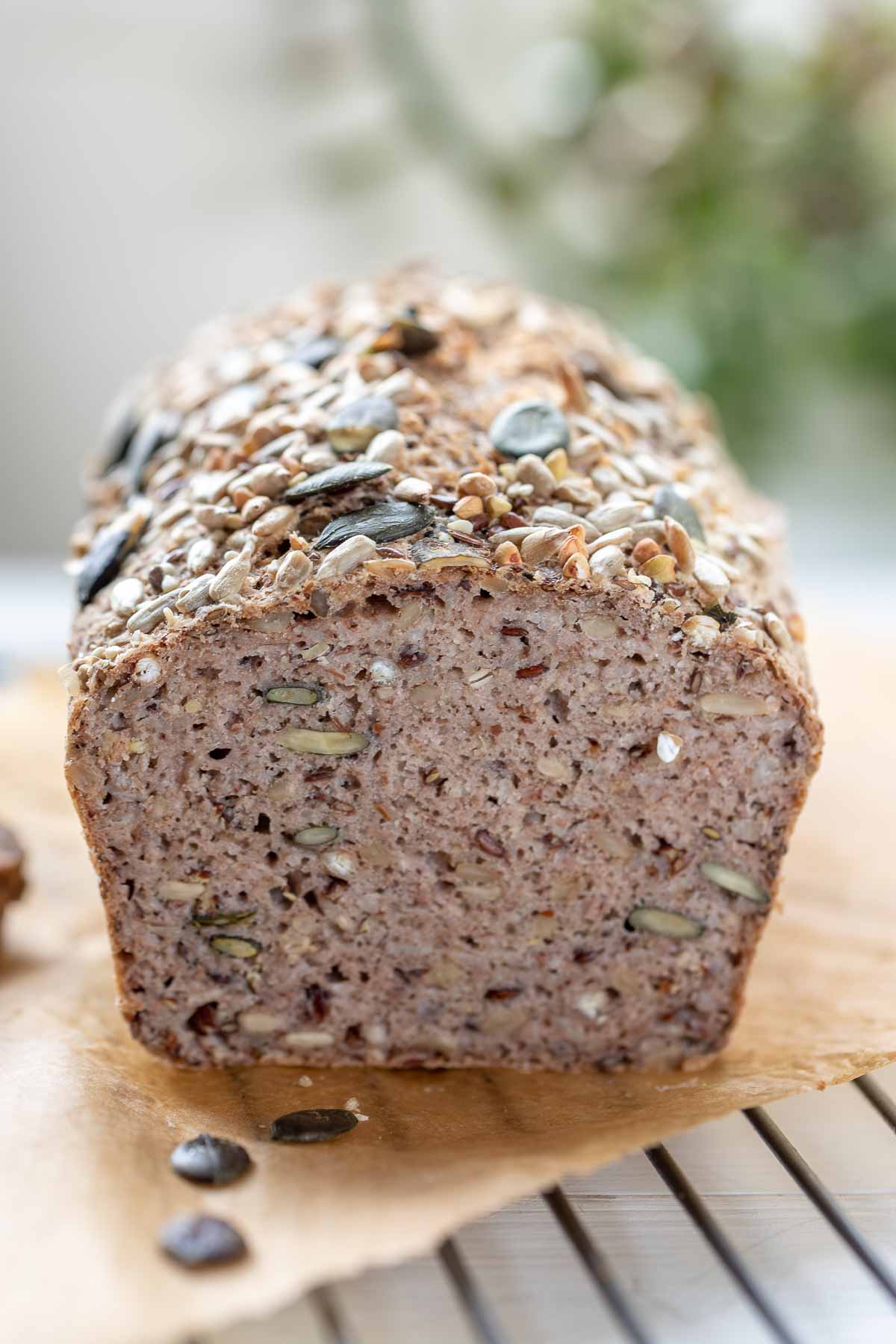
A healthy, and super easy recipe for a vegan buckwheat bread made gluten-free using buckwheat flour, buckwheat flakes and plenty of seeds!
If you are already familiar with my other buckwheat bread recipe made with grated carrots, walnuts and sunflower seeds, then I’m pretty sure you are going to also love my new buckwheat bread! And this one is even simpler to make (is that possible?), is just as tasty and stays fresh even longer. Best yet, is that it’s so easy to make, freezes well and goes with anything – whether you are vegan or not.
These toppings are great with this buckwheat bread recipe
As a start, I love it toasted with herbed cream cheese or French Boursin (a favourite!), thinly sliced cucumber, a sprinkle of sea salt and broccoli sprouts or alfalfa sprouts. Sooo good. It’s also great with poached eggs, mashed avocado, homemade nutella, peanut butter or jam, or simply dunked in a delicious and warming bowl of soup…need I go on? Now that I’ve gone through more than a few loaves, I have found the perfect method for making this buckwheat bread recipe. Above all, I’m really thrilled with the taste and consistency. Straight out of the oven and still warm, it tastes great on its own. But my absolute favourite way to enjoy it is toasted — there is something about toasted seed bread that tastes so good. Which is also something that makes it the perfect bread to make in advance and store in the freezer — then you always have a healthy toast bread on hand. Best yet, one that just happens to be vegan and gluten-free.
What makes this buckwheat bread recipe so simple
What always intimidated me from baking my own gluten-free bread was the long list of obscure, unfamiliar ingredients in so many recipes – industrial food additives like gums and other binders. Okay, yes you need some form of binder when you take out the gluten or things like eggs, but there are so many other ways to bring the dough together. This gluten-free vegan bread uses simple natural ingredients to do just that. Natural ingredients like ground linseed and psyllium husk do an amazing job of acting like a binder. Chia seeds are also a great choice instead of linseed – they are usually my go-to egg-substitute. Yes, these natural ingredients create a loaf of bread that you can easily slice (doesn’t fall apart) and is like real bread and not a brick.
Using natural binders for gluten-free vegan baking
Generally there are three binders I like to use in vegan gluten-free baking: chia seeds, ground linseed, psyllium husks or a combination of them. Psyllium husks I would say are the most magical of the three. It comes from the seed of the plantago plant, a native of India and Pakistan, is a great source of soluble fibre and loves to absorb moisture. With the addition of water it becomes thick and gelatinous, and adds an excellent elasticity and gluten-like-structure, while having an undetectable flavour or color. Plus there is the extra bonus that it supports healthy digestion.
Using psyllium, chia and linseeds in baking
Adding a teaspoon of psyllium to any baking recipe will help provide extra structure and improve the crumb and texture of your baked goods. It’s a win, all around. Chia seeds are also very reliable in gluten-free baking. I generally use them as I would eggs by creating a chai egg by combining 1 tablespoon chia with 3 tablespoons water and letting soak until it forms a gel (10-15 min). As for ground linseeds, I usually use them in combination with chia or psyllium as although it has a nice nutty taste, it only provides moderate binding strength.
Looking for other gluten-free bread recipe inspiration?
Then try one of these recipes:
- Buckwheat Bread (vegan + gluten-free)
- Buckwheat Chickpea Bread (vegan + gluten-free)
- Apple Cardamom Bread (Gluten-Free)
Simple Buckwheat Bread Recipe (gluten-free & vegan)
A healthy, and super easy to make vegan buckwheat bread recipe made with natural ingredients. Yeast-free and nut-free. Slices like regular bread and freezes well. This bread raises to 6,5-7cm high, and can be sliced into 20-22 pieces.
Ingredients
Bowl 1:
- 650 ml water
- 4 tablespoons ground linseed (flaxseed)
- 3 tablespoons psyllium husk powder (Indian)
- 2 1/2 tablespoons maple syrup (or honey)
- 2 tablespoons organic apple cider vinegar (unfiltered)
Bowl 2:
- 300 g buckwheat flour
- 100 g buckwheat flakes
- 1 1/2 teaspoons baking powder (phosphate-free)
- 1/2 teaspoon baking soda
- 1 1/2 teaspoons sea salt
- 1 cup mixed seeds e.g. a mix of buckwheat and seeds such as sesame, pumpkin, flax, or sunflower, plus more for garnish (100g)
- Coconut oil, to grease the loaf pan
Method
-
In a large mixing bowl combine the water, maple syrup, vinegar, linseed and psyllium husk. let stand 20 minutes, then whisk to combine.
-
Combine the buckwheat flour, buckwheat flakes, mixed seeds, baking powder and salt in a medium mixing bowl. Whisk together till well combined. Pour the dry mix into the wet mix and mix until combined thoroughly.
-
Meanwhile, preheat oven on to 350°F / 180˚C. Grease a loaf pan with coconut oil and line the bottom and sides with a piece of parchment paper.
-
Transfer the dough into the prepared loaf tin and smooth the top with a spatula. Sprinkle with extra seeds.
-
Transfer to the preheated oven and bake for 1 hour 10-15 minutes. The bread should be golden brown and very firm to touch in the center, when it is done.
-
Remove from the oven, place on a cooling rack; remove it from the loaf pan as soon as it's cool enough to handle to avoid it "sweating" and then allow to cool completely.
-
Once cooled, slice and store in the fridge for up to a week or sealed in the freezer for a longer life (see more tips below).
Notes
- I use a ceramic loaf pan 30,5 x 13,5 x 8,5 cm
- This recipe uses ground psyllium husk.
- This buckwheat bread also stores well for a number of days on the counter double-wrapped in baking paper and a kitchen towel. Wrapped just in a kitchen towel the bread dries out faster. The bread should be fully cooled before storing.
- I like to slice half of the loaf and freeze it so that I always have toast bread on hand.
- This bread can also be made into “rolls” as reported by one of my readers. You can use a muffin tin (greased and lined at the bottom) and reduce the baking time. If you try this let me know!
- This buckwheat bread recipe can also made without baking powder. Use two teaspoons baking soda instead. Note, increasing the amount of baking soda reacts with sunflowers since they are sensitive to changes in Ph balance. The alkaline effect of baking soda interacts with the seeds. This is totally normal and they are still safe to eat.
 Did you try this recipe?
Did you try this recipe?
Then tag @ellerepublic on Instagram and hashtag it #ellerepublic
How did you like it?
Please let me know how this buckwheat bread recipe turned out for you! I would love to hear how you liked it. Simply rate it with the stars above ⭐or leave me a comment and rate it below.
Did you make any changes to this recipe?
If you have tips for other readers, let me know! It helps me and other readers so much. Sharing is Caring :-).
This post contains affiliate links. If you decide to make a purchase through my link, Amazon will pay me a commission for it. This doesn’t cost you anything additional and the price remains the same. More about advertisements on Elle Republic.

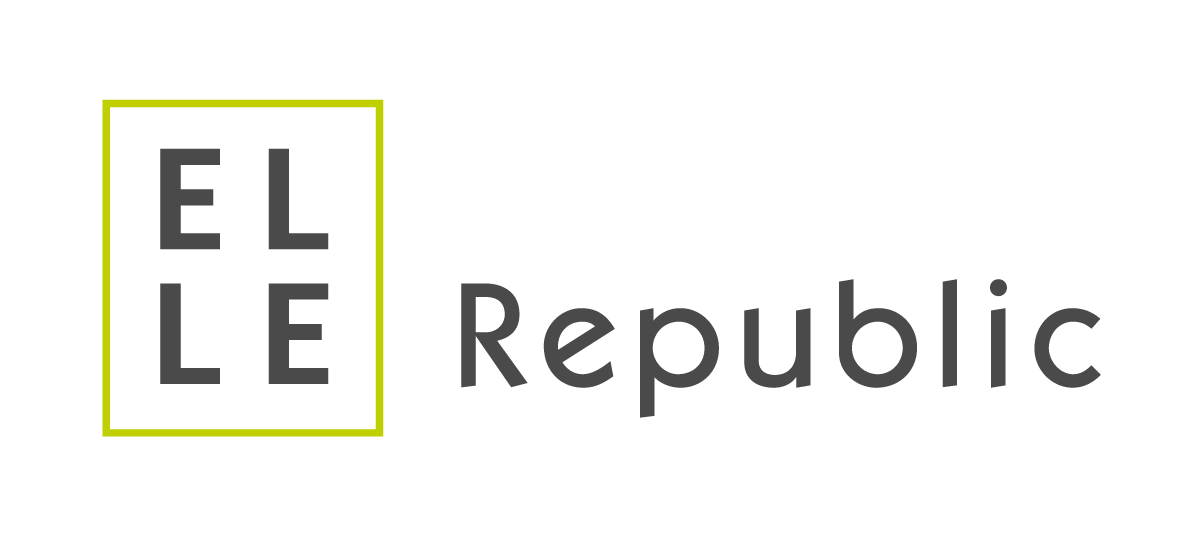
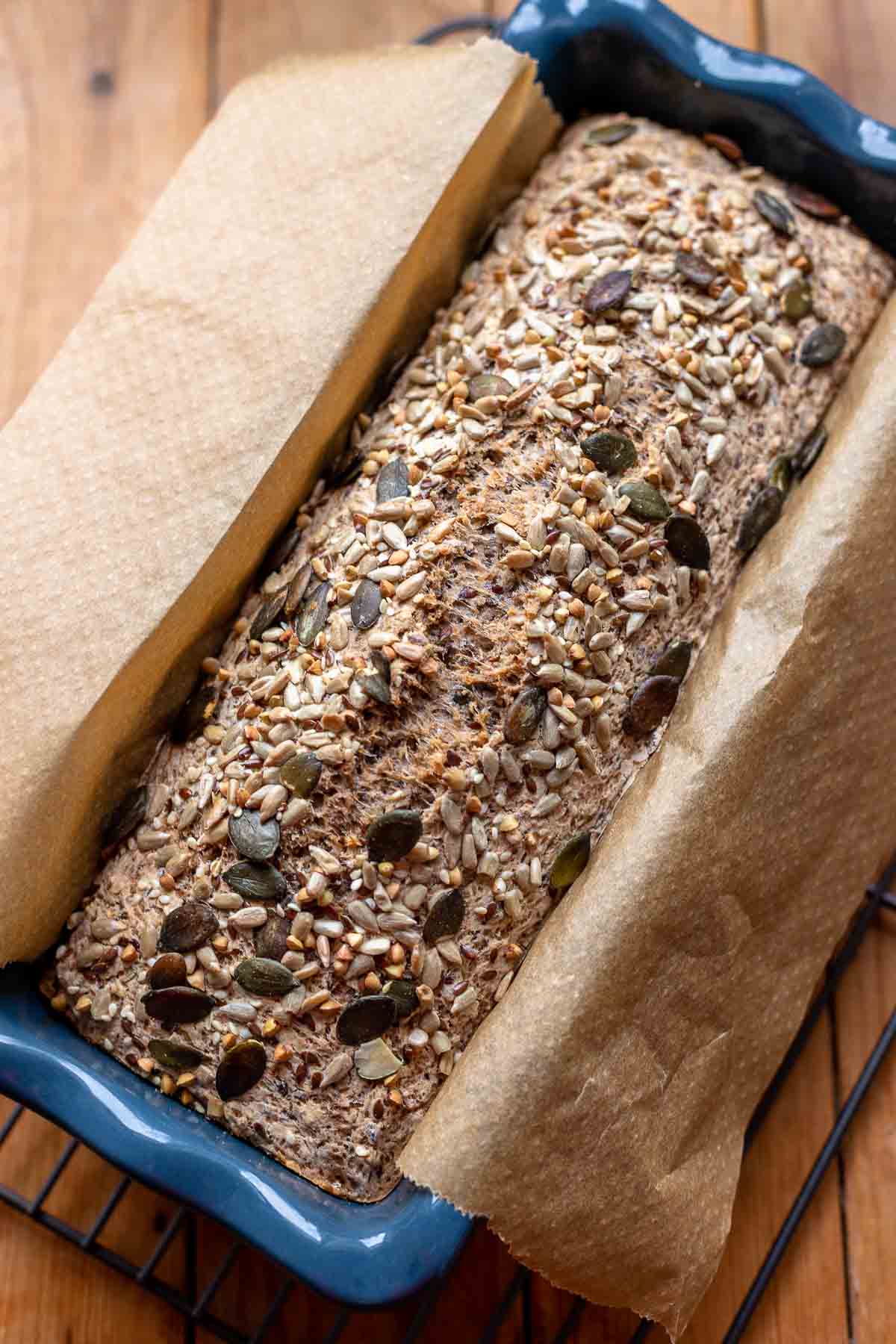
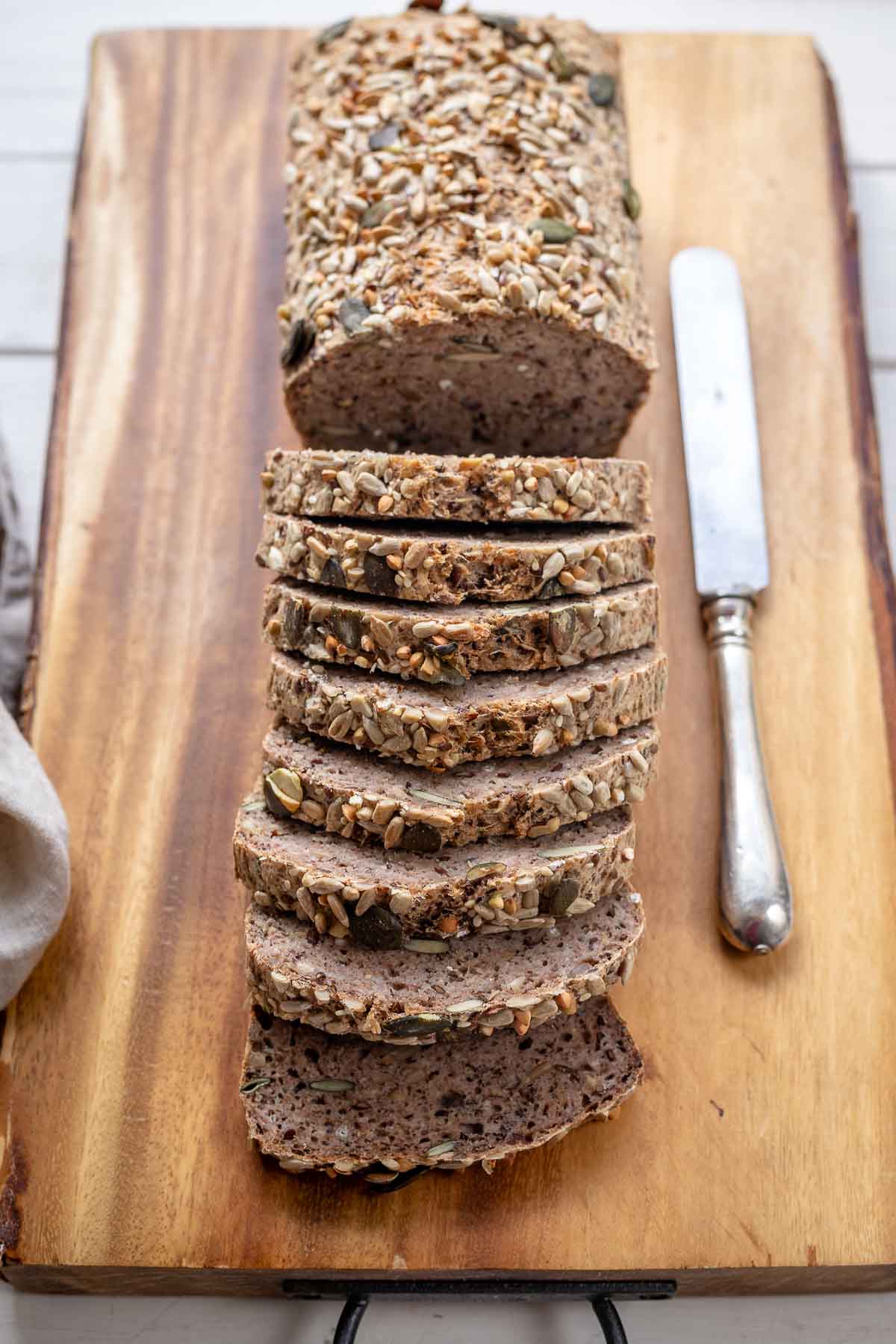

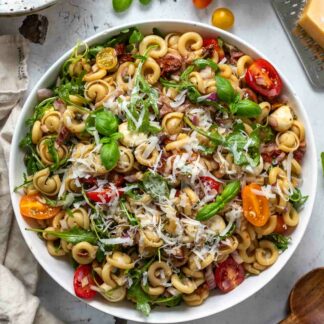
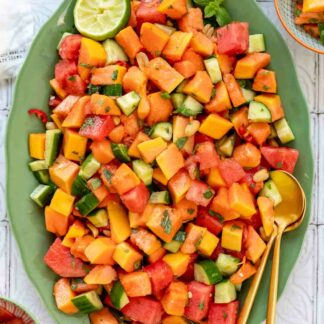
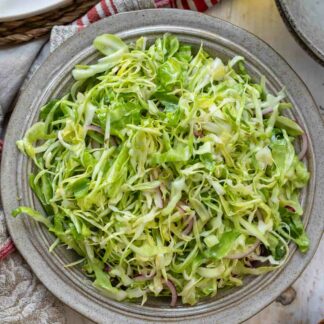

Hi Marina, I have made this loaf many times and i absolutely adore it. I like it so much that I sometimes bake one as a gift for friends. I’m not gluten free – I just don’t eat wheat and I wondered is it possiblle to make the loaf with any other non-wheat flours, rye for example ?
Many thanks, Kelly.
Hi Kelly, I haven’t tried making this using other flours. I would expect it would work out well, of course the flavour would be quite different. Would love to hear back if you try this with rye or something else. Let me know!
Hi Elle 🙂
Is there any substitute for the buckwheat flakes? Maybe brown rice flour?
Don’t have them where I live atm.
Thx!
Hi Murielle, you can use oats (fine) or other flaked grains in place of the buckwheat flakes. 🙂
Thank you for sharing this recipe. I am not a good at baking but this was easy to follow and make, high in fibre and healthy ingredients, nice texture and yummy flavour, all in all a winner, thanks.
Thanks Gloria, so glad you enjoyed this gluten-free bread so much!
Brilliant! Awesome! Best bread ever!! Super healthy ingredients. Taste and texture are perfection. Easy to make with no yeast or waiting time to process. My new favorite bread!!
Thank you Geri for the 5 stars! 🙏 So happy to hear that you enjoyed this gluten-free bread recipe and that it worked out perfectly for you! 🙂
Made this bread today but the sad story it collapsed ones I took it out of the oven . The upper part still has bubbles but the lower like a solid brick without an air inside. But during the process it raised double inside the oven 🙁
Hi Dariia, I’m really sorry to hear that this gluten-free bread recipe didn’t work out for you! I’m not sure what would have went wrong. Perhaps the ingredients are different depending on where you are located. In Germany, we only have one type of buckwheat flour (light-colored), but I have heard from readers that there is also a dark buckwheat flour, which can produce different results. I also have another buckwheat bread recipe: https://ellerepublic.de/en/buckwheat-bread-vegan-gluten-free/ which is easy to make. Maybe it’s worth trying it out.
Just made this bread and am over the moon! The easiest, seriously yummiest homemade gluten free bread I’ve ever made! It rose beautifully and has a wonderfully soft, springy texture inside. I omitted the cup of seeds because of allergies but stuck to the recipe for everything else. Thank you THANK YOU for this amazing recipe!
Thank you Dana! And thank you for the 5 stars. So glad to hear that you enjoyed this gluten-free bread recipe so much. I usually freeze slices of it so I always have it on hand. It’s delicious toasted! And surely also nice without the seeds. 🙂
Thank you so much for this wonderful recipe. I have been on and off gluten the last few years. But now due to health reason I would have to be gluten free for a while. This is by far the best gluten free yeast free bread. It did not taste of baking soda unlike the other yeast free bread. Texture wise is very close to “normal” bread. This will be my go to bread recipe from now on.
Fantastic! Thanks Lulu for the feedback and the 5 stars! 🙂
Totally inedible like a brick
Hi Johanna! Sorry to hear that this recipe didn’t turn out for you. I’m not sure where you are located, but I have heard from other readers that their are different types of buckwheat flour in North American (light versus dark) and that can give a totally different result. We only have one kind in Germany and I would say it is definitely a light flour.
Made this recipe and it turned out just like the pictures shown and tasted amazing. Thank you for posting this recipe, such a great option to have.
Thank you Shilpa! So glad you enjoyed this recipe and thank you for the 5 stars! 🙂
Hey! I’m trying the recipe today, I really hope it turns out well! 😀
Can you tell me what is the role of apple cider vinegar and is it really necessary?
Thank you!
have a lovely day <3
Hi Marina, the apple cider vinegar is used to enhance the leavening and flavor. In most cases, you can replace apple cider vinegar with other vinegars or lemon juice. For the flavor, I think unseasoned rice vinegar would work well here, or perhaps freshly squeezed lemon juice. Let me know how this turns out for you! 🙂
Oh cool! Thank you so much for the reply 😀
I baked the bread yesterday and we loved it!! I was so happy it looked like real bread ahaha 😀 And my boyfriend was very happy and surprised ahaha (Gluten-free & vegan baking are still quite new and challenging for me 🙂 )
The recipe was really simple to make and follow, I didn’t have any linseed at home so I used the same amount of chia seeds instead and it worked great. The process was actually really fun and surprising for me since I’m a beginner and I didn’t know how it will look like 🙂
I also added some walnuts inside and some cumin seeds and sea salt flakes on top of the bread, that combination was amazing with the flavor of buckwheat! Next time I’ll try it with some added dry fruits as well, generally love dry apricot when baked in bread!
All in all, loved it and thank you for this recipe! You obviously made us super happy ahah 😀 we finally have a delicious and simple gluten-free recipe to go to when we have our bread cravings <3
Super happy to hear how much you enjoyed this recipe! 🙂 Love the idea of adding cumin seeds and sea salt flakes on top. Thanks so much for the 5 stars!
Made this today and it came out just like the pictures posted and it tasted amazing. So glad to find this vegan, oil free and gluten free bread. Thank you so much for posting this recipe.
You are so welcome! Thank you for your comments. 🙂
I am testing it out right at the moment, it is in the oven 😉 then I can leave you a second comment, how it worked out 😀 greetings!
Hi Mäxi! I hope the bread turned out for you and that you enjoyed it! 🙂
I’d really like to try this recipe for my son who’s gluten free, however found that psyllium husk is very expensive, could I substitute it?
I would try substituting the psyllium husk with chia seeds. They should produce the same result. Let me know how it turns out for you! 🙂
Hi instead of ceramic can I use a cake tin will the bread bake well?
Yes, I have also make it in a regular bread tin. Let me know how what think once you’ve given it a try! 🙂
Hi, I have never made buckwheat bread and am excited to try this recipe. However, I only have psyllium husk powder. Would that work instead?
Hi Chanty, ground psyllium husk is what I use in this recipe. Let me know how it works out for you! 🙂
Is yeast forbidden in vegan? I’m new
Yeast is vegan. It’s a fungus, so if your vegan lifestyle includes eating mushrooms, then yeast is okay. 🙂
This recipe sounds great! Would it still work without the buckwheat flakes? I could only find flour..
Hi Elena, buckwheat flakes can be replaced with other flakes, such as fine-cut oats, rice or quinoa flakes.
I also have another buckwheat bread recipe, where I use a mix of flour and oats. Both recipes are really easy. 🙂
Hello Elle, Thank you for the recipe! I like the taste.
Following the other recipe of yours – I added the carrot here, because I find it veeery beautiful.
Regarding the oats vs buckwheat flakes – I have a question/remark I would like to invite you to comment.
I used fine-cut oats (io buckwheat flakes) and I find the result gooey. It’s not the 1st time I’m sort of blaming oats for making things gooey. Actually, that’s where I see the difference between your 2 breads – the pics show the ‘structure’/density of the bread.
Do you agree that oats make (anything) a bit gooey? Or what is that?
More time baking wouldn’t solve that, right?
Hi Ilze, thanks for your comment! Hmm, I haven’t had that experience with oats even the fine-cut ones. I am not sure if they are different here in Germany, as I have had readers comment that buckwheat flour differs in North America. I would however think that maybe the bread needs to be baked a tick longer. I usually check my bread for doneness by tapping it with my knuckles to see if it sounds hollow. 🙂
Hi there,
Do you know what is the reason why we have to mix the “binders” i.e. psyllium/chia… Before in water, instead of having them with all with the dry ingredients and getting then water mic with all other ingredients? Hope my question makes sense..
Hi Thom, if I am using baking powder or baking soda in a recipe, I soak the binder separately instead of with all dry ingredients as I find it affects the overall leavening power. My bread rises better, if I prepare the binders ahead. Hope this helps clarify. 🙂
I understand. But if they are already soaked, aren’t their binding properties already used up?
When soaked in water, both psyllium husk and chia seeds become mucilaginous and form a gelatinous-like texture. It’s this natural gel-forming property that make them excellent egg-replacers and binders. I hope this makes it more understandable. 🙂
I haven’t tried this yet but can the maple syrup be eliminated.
Hi Dianne, the maple syrup can be omitted if preferred. Otherwise, reduce the amount or replace it with rice malt syrup or honey. I think buckwheat bread works out better with a little sweetener. I also have another buckwheat bread recipe (https://ellerepublic.de/en/buckwheat-bread-vegan-gluten-free/) and if you are using a naturally sweet (or sweetened) plant-based milk you can definitely omit the maple syrup without sacrificing flavor. Please let me know how this turns out for you! 🙂